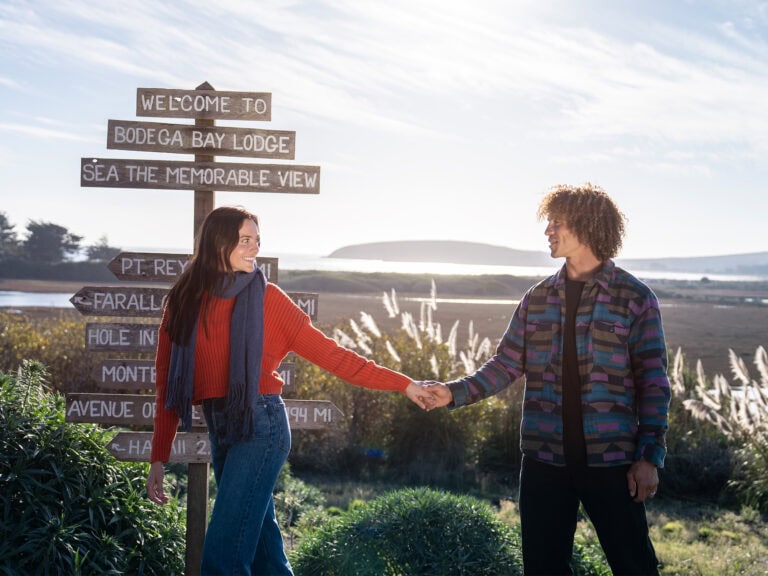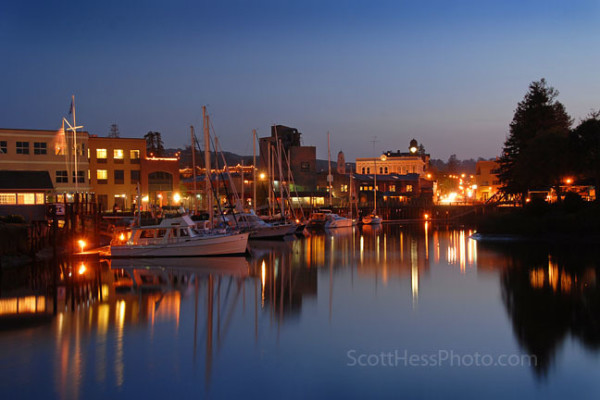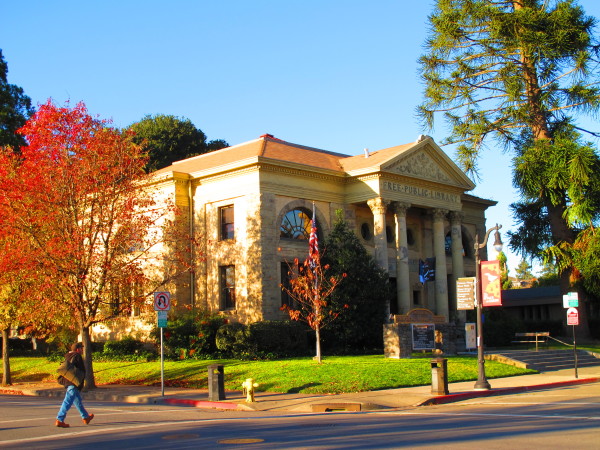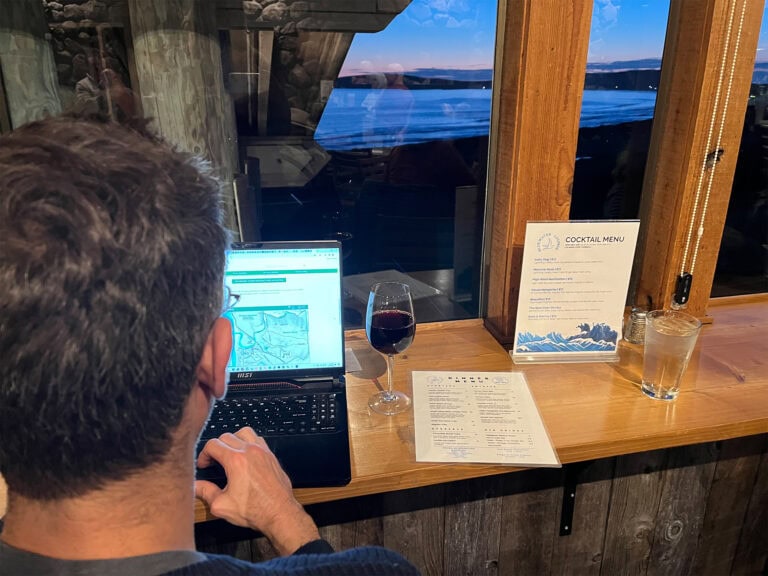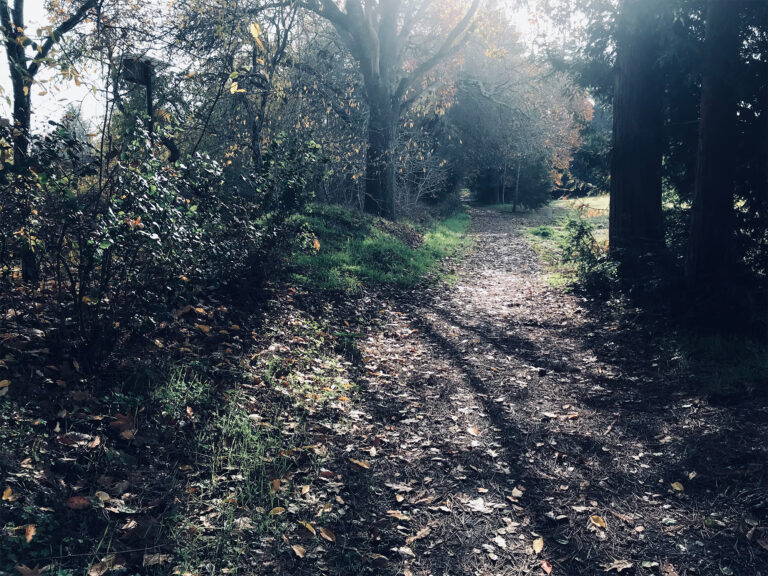A Walk in Petaluma’s Historic Downtown
A leisurely walking tour of historic Petaluma, stopping along the way for lunch, is a great way to explore the area while relaxing with family or friends.

First settled in 1851 and chartered in 1858, Petaluma is one of the state’s oldest cities. From early days it was prosperous, thanks in large part to the fact that it straddles the Petaluma River, making it an important regional shipping port back in the day.
That prosperity translated into beautiful homes and impressive commercial buildings, all of which managed to survive the 1906 earthquake that devastated many other Bay Area cities.
Before starting your excursion, you might want to drop in at the Petaluma Visitors Center. It’s located in a handsome renovated Mission Revival train depot just off the freeway and on the way to the historic downtown area. The enthusiastic volunteers can answer any questions you have, provide maps and brochures, and give you tips about where to park and things you shouldn’t miss.

Then head off to explore Petaluma’s downtown streets and alleys on foot. A good deal of this area — filled with ornate iron-front buildings from the 1860s-1890s — is listed on the National Register of Historic Places. A few of the highlights include:
- American Trust Company, 101 Petaluma Blvd. North: It’s a tribute to Petaluma’s wealthy agricultural beginnings that it could support magnificent bank buildings anchoring each end of one commercial block. Built in 1926, this building is now Vintage Bank Antiques. Every inch of its three floors, including the former vault, is crammed with furniture, bibelots, memorabilia, paintings, and more.
- Temperance Fountain, Corner of Western Avenue and Petaluma Boulevard: Erected in 1891 by the Women’s Christian Temperance Union, this solid-marble fountain makes no bones about one of the day’s major issues. Engraved in bold letters across its face are the words “Total Abstinence is the Way to Handle the Alcohol Problem.” That probably didn’t put much of a dent in the business that Petaluma’s 50 saloons were doing at the time. And it didn’t stop residents from making bootleg booze — not to mention drinking it in speakeasies — decades later, during Prohibition. Here’s a good read on Petaluma’s Prohibition days.
- Clock atop the Masonic Building, Western Avenue and Petaluma Boulevard: The city’s Masons were obviously prospering when they erected this impressive Masonic Lodge in 1882. But the real talking point here is the huge clock atop the building. Built in Connecticut, it shipped ’round the Horn to San Francisco. From there it traveled over the Bay and up Petaluma Creek, somehow making it onto the roof.

There is much more to marvel over here. In addition to exhibits on local history, the Petaluma Historical Library & Museum offers free guided walking tours of the historic downtown led by a costumed docent on Saturdays from May to October.
The Visitors Center offers a list of 38 historic stops in the space of just a few blocks, as well as directions for a self-guided tour of the city’s stunning Victorian-era homes, with architectural styles that include Queen Anne, Victorian stick, Gothic Revival, Colonial Revival, and many more (they just don’t build ’em like that anymore!).

The most difficult aspect of your visit will probably be in choosing where to eat. Petaluma is a foodie haven, offering a bit of something for everyone. In the old U.S. Bakery building (circa 1860), Della Fattoria café and bakery offers delicious, wholesome meals and baked goods, beautifully prepared and presented. And in the Great Petaluma Mill building, Wild Goat Bistro uses local, fresh ingredients in a variety of culinary traditions to create specialty Neapolitan-style pizzas, innovative salads, scrumptious main dishes, and sharable small plates. For other lunch options, read Where to Eat: Restaurants in Petaluma.
Although not historically known as a ‘wine country’ destination, vintage downtown Petaluma has long been home to some of Sonoma County’s finest wine country cuisine.

In the Petaluma Mill, Adobe Road Winery pours their Cabernet Sauvignon and other award-winning wines. Founded by a performance racing team leader and named for the main road to the adobe where General Mariano Guadalupe Vallejo first planted wine grapes in the 1830s.
A stylish wine bar in Petaluma’s theater district, offering tempting food pairings, La Dolce Vita stocks a good selection of the Petaluma Gap region’s hard-to-find wines.
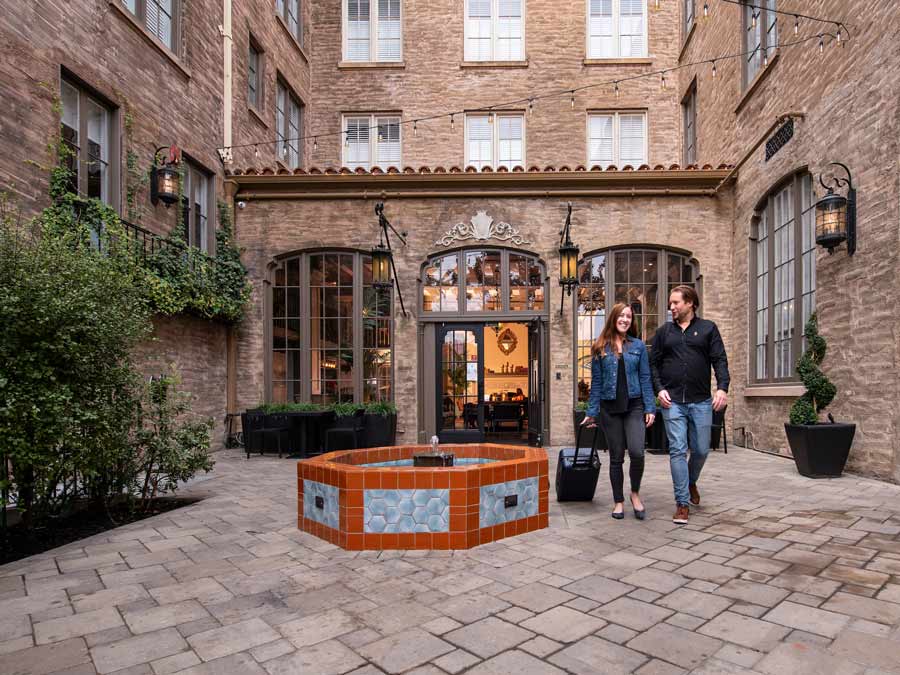
Restored to recall the grand old days of hotel travel, Hotel Petaluma is the region’s newest, and perhaps most stylish option in lodging.
And for more ideas about how to explore Petaluma, check out Getting Around Petaluma, 5 Fun Things to Do in Petaluma, and Guide to Wine Tasting in Petaluma.
Written by Sonoma Insider Suzie Rodriguez.
THIS IS WINE COUNTRY.
Share your experience using #SonomaCounty or #LifeOpensUp





